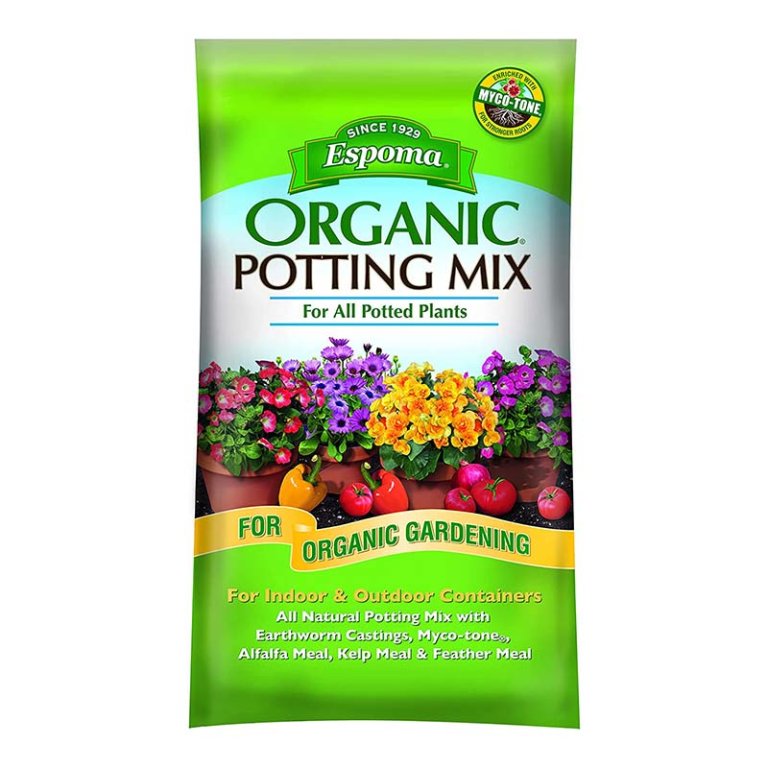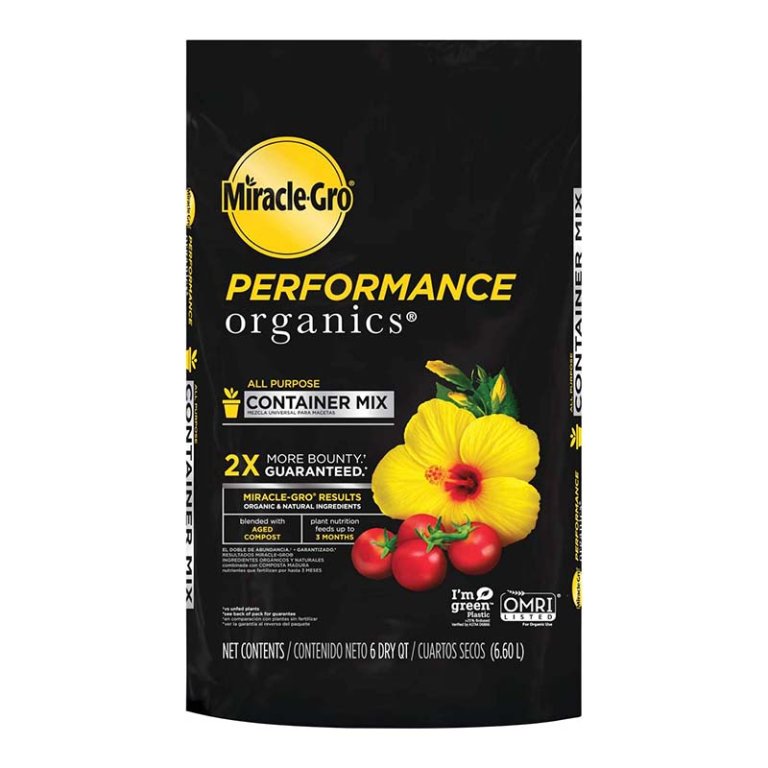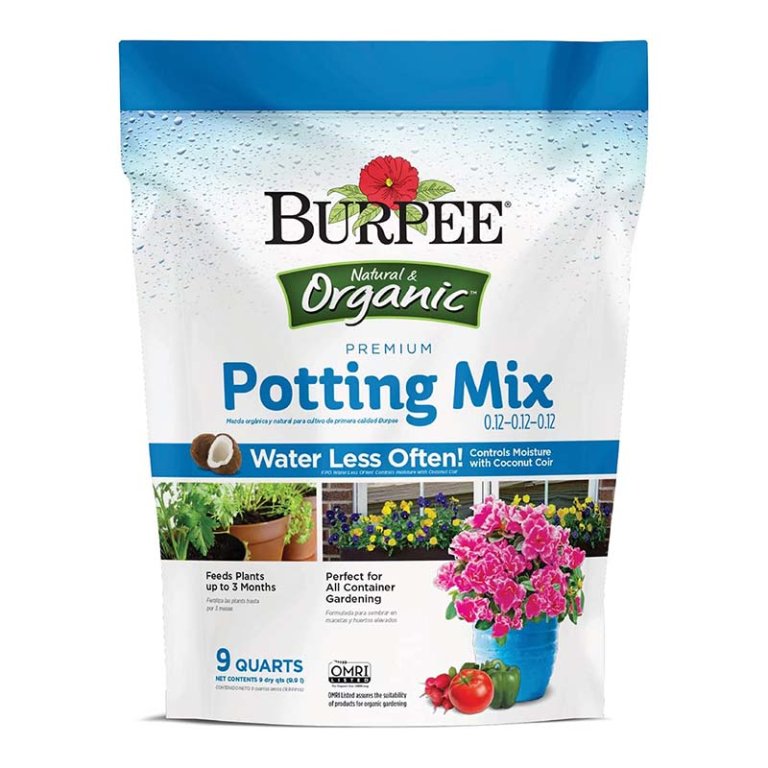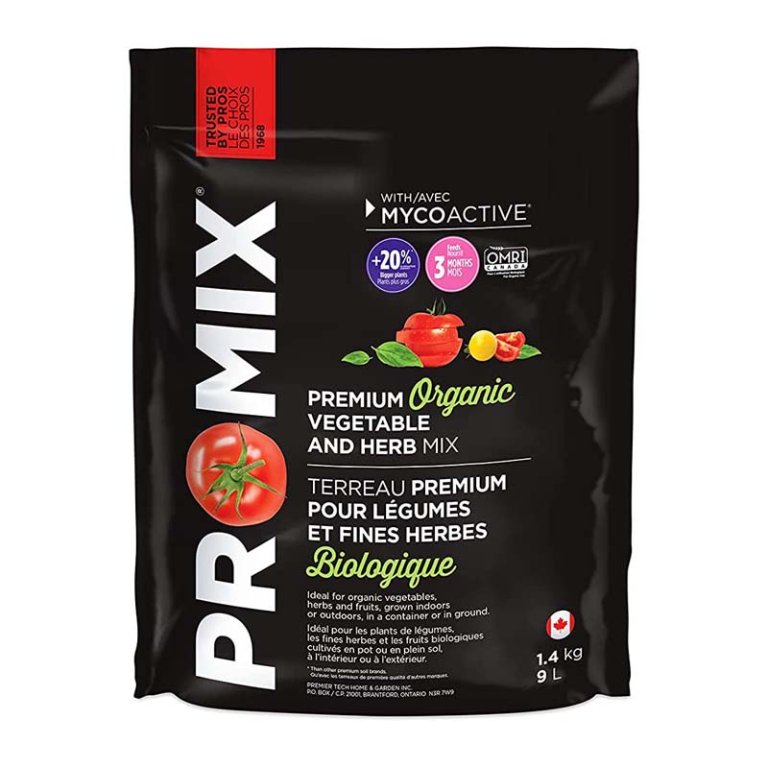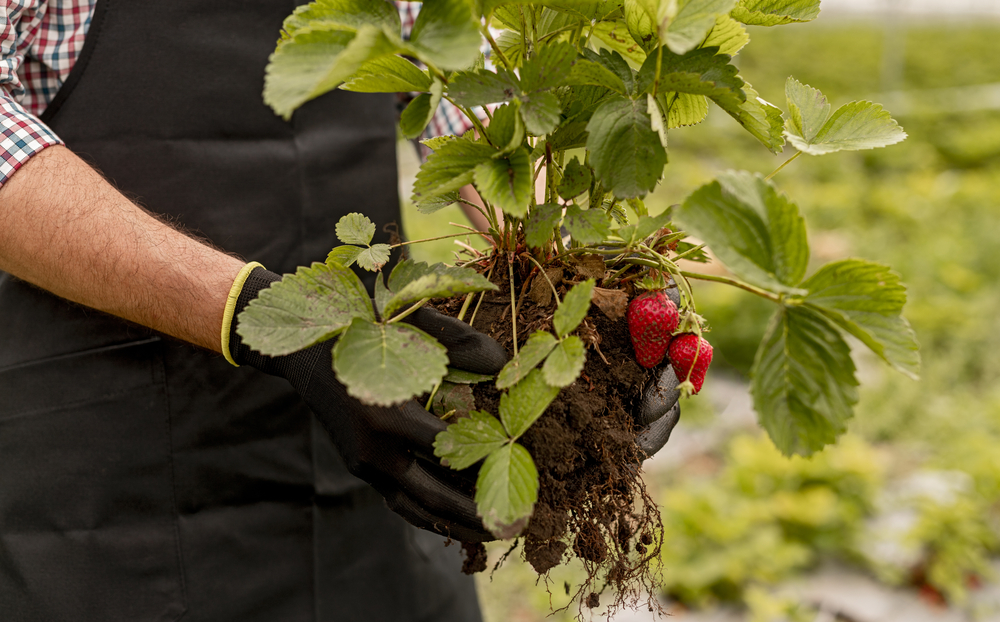
We may earn revenue from the products available on this page and participate in affiliate programs. Learn More ›
Few fruits are quite as delectable—and desirable—as strawberries. Fortunately, these summertime favorites are relatively straightforward to grow, whether planted in a garden bed, a strawberry tower, or a container. Still, some home gardeners can’t seem to produce flavorful fruits, or their plants yield only a handful of berries. The secret to a sweeter, more bountiful harvest often starts with optimal soil.
Strawberries prefer soil that drains well yet retains a small amount of moisture to keep the roots from drying out. They also thrive in soil that’s rich in nutrients. Our favorite is Espoma’s AP16 mixture thanks to its good drainage and added nutrients. Ahead, learn what to look for when choosing the best soil for strawberries and find out why the following products will help ensure maximum production and the tastiest flavor.
- BEST OVERALL: Espoma AP16 16-Quart Organic Potting Mix
- BEST BANG FOR THE BUCK: Miracle-Gro Performance Organics Container Mix
- BEST FOR CONTAINERS: FoxFarm Ocean Forest Potting Soil
- BEST MOISTURE RETENTION: Burpee Premium Organic Potting Natural Soil Mix
- BEST NUTRIENTS: Pro-Mix Organic Vegetable and Herb Potting Mix
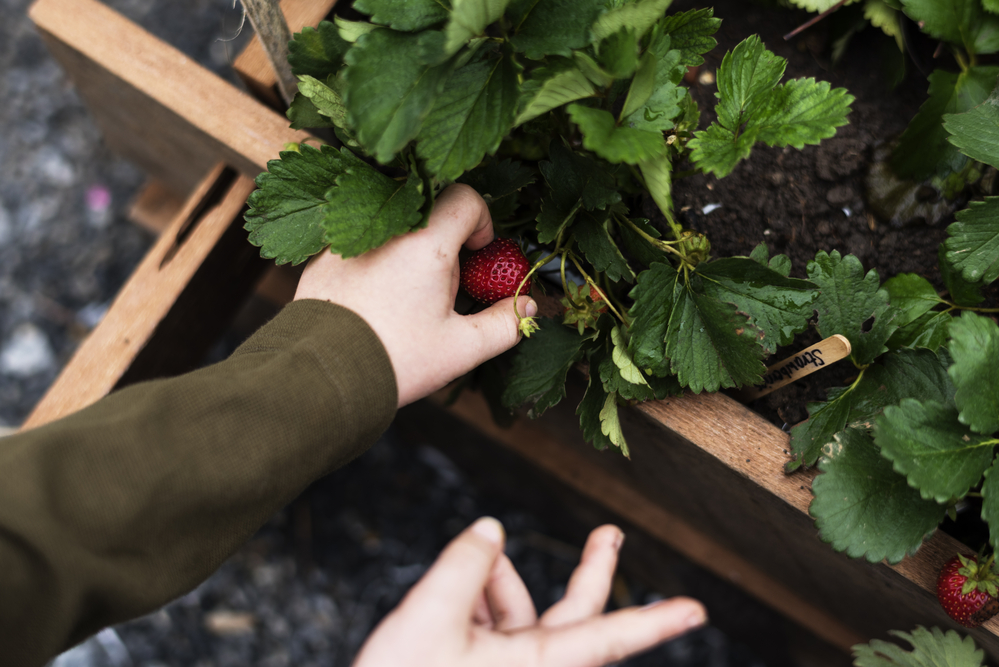
Soil for Strawberries Comparison
| Product | Primary Ingredients | Added Nutrients | Quantity |
| Espoma AP16 16-Quart Organic Potting Mix | Peat moss, humus, perlite | Myco-tone | 16 quarts |
| Miracle-Gro Performance Organics Container Mix | Perlite, peat, rice hulls, coir | Compost | 6 quarts |
| FoxFarm Ocean Forest Potting Soil | Composted forest humus, sandy loam, and sphagnum peat moss | Earthworm castings, bat guano, and seagoing fish and crab meal | 38.6 quarts |
| Burpee Premium Organic Potting Natural Soil Mix | Coco coir | Fertilizer | 9 quarts |
| Pro-Mix Organic Vegetable and Herb Potting Mix | Sphagnum peat moss, peat humus, composted forest products, coco fiber, perlite | Fertilizer | 9 liters |
Our Top Picks
To qualify as a top pick in our lineup, the following soil mixes had to contain ingredients that both drain well and retain moisture. They also had to include components that would keep the soil from compacting over time. These soil mixes are among the best options for growing strawberries in containers, and they also can be used to amend the soil in raised and garden beds to improve quality.
Best Overall
Espoma AP16 16-Quart Organic Potting Mix
See ItWhat We Like
- Designed to reduce plant stress in droughtlike situations
- This potting mix is well draining
- Includes mycorrhiza nutrients
What We Don’t Like
- Slightly higher price than some others on the market
Product Specs
- Primary ingredients: Peat moss, humus, perlite
- Added nutrients: Myco-tone
- Quantity: 16 quarts
Strawberries love rich soil, and Espoma’s organic potting mix provides an optimal blend of sphagnum peat moss, forest humus, and perlite. It also contains ground dolomitic limestone to help maintain a stable pH level.
The mix is designed to drain well so that strawberry roots won’t have to stand in water, while retaining adequate moisture and providing aeration to the roots for healthy growth. In addition, Espoma adds Myco-tone, a proprietary blend of mycorrhiza (mushroom-based) nutrients that increases the micronutrient levels in the soil and reduces plant stress during drought-type situations.
Get the Espoma soil for strawberries at Amazon.
Best Bang for the Buck
Miracle-Gro Performance Organics Container Mix
See ItWhat We Like
- Designed to drain efficiently to prevent root rot and other disorders
- Includes added nutrients to feed plants for up to 3 months
- Wetting agent helps the potting soil absorb moisture during initial watering
What We Don’t Like
- Some users have complained of mold growing on the soil surface
Product Specs
- Primary ingredients: Perlite, peat, rice hulls, coir
- Added nutrients: Compost
- Quantity: 6 quarts
To grow strawberries without breaking the bank, consider this quality potting mix from Miracle-Gro. It contains sphagnum peat, coco coir, perlite, and rice hulls to form a lightweight soil that won’t compress—even over time—so strawberry roots have room to grow.
The mix also contains naturally derived nutrients designed to get newly transplanted strawberry seedlings off to a strong start and keep the plants fed for up to 3 months. According to the manufacturer, users can expect two times the bounty when compared to unfed plants. This is a dehydrated mix, but because dry peat moss presents initial moistening challenges, Miracle-Gro adds a wetting agent. This makes the first watering go well, after which the potting mix can absorb moisture with ease.
Get the Miracle-Gro soil for strawberries at Amazon.
Best for Containers
FoxFarm Ocean Forest Potting Soil
See ItWhat We Like
- pH adjusted at 6.3 to 6.8, making it ideal for strawberry plants
- Includes a wide variety of nutrient-rich ingredients
- Comes in a large 38.6-quart bag, offering excellent value
What We Don’t Like
- Pricey
Product Specs
- Primary ingredients: Composted forest humus, sandy loam, and sphagnum peat moss
- Added nutrients: Earthworm castings, bat guano, and seagoing fish and crab meal
- Quantity: 38.6 quarts
Not everyone has access to large garden beds, so planting strawberries in containers is a great alternative. While the earth’s soil is full of beneficial nutrients, however, many potting mixes lack the nutrients that strawberry plants need to thrive.
This specific FoxFarm blend contains a higher percentage of nutrient-dense ingredients than competing mixes, which makes it among the best options for container gardening. Along with the primary ingredients of composted forest humus, sandy loam, and sphagnum peat moss, this mix also contains earthworm castings, bat guano, and seagoing fish and crab meal. It’s pH adjusted at 6.3 to 6.8, which is ideal for strawberry plants.
Get the FoxFarm soil for strawberries at Amazon or The Home Depot.
Best Moisture Retention
Burpee Premium Organic Potting Natural Soil Mix
See ItWhat We Like
- Optimized for container gardening
- Retains maximum moisture while providing excellent drainage
- Feeds plants for up to 3 months with built-in slow-release fertilizer
What We Don’t Like
- Some users say this product isn’t ideal for starting seedlings
Product Specs
- Primary ingredients: Coco coir
- Added nutrients: Fertilizer
- Quantity: 9 quarts
This soil from Burpee offers enhanced moisture protection, making it optimal for growing strawberries in small containers where the soil tends to dry out quickly. The mix, which contains coco coir, drains well and offers maximum aeration so plant roots can develop.
This mixture also includes added fertilizers to boost plant growth and increase the number of blossoms. The slow-release fertilizer in the formula will feed strawberry plants for up to 3 months. Use the product in containers or blend it with existing soil in garden beds to add aeration and increase moisture retention.
Get the Burpee soil for strawberries at Amazon.
Best Nutrients
Pro-Mix Organic Vegetable and Herb Potting Mix
See ItWhat We Like
- Includes a slow-release fertilizer that feeds plants for 3 months
- Designed to ensure proper drainage and soil aeration
- Limestone is added to the formula in order to balance pH levels in the soil
What We Don’t Like
- This product isn’t as readily available as some of the others we recommend
Product Specs
- Primary ingredients: Sphagnum peat moss, peat humus, composted forest products, coco fiber, perlite
- Added nutrients: Fertilizer
- Quantity: 9 liters
Growing delicious strawberries just got easier with this nutrient-rich potting mix from Pro-Mix. The brand’s premium potting mix is a blend of sphagnum peat moss, peat humus, composted forest products, coco fiber, and perlite that drains well and provides aeration. The combination also ensures that the soil retains moisture between waterings.
This potting mix is amended with microbes and slow-release fertilizer that last for 3 months. Limestone is also added as a pH adjuster, ensuring that the soil will be within a suitable pH range for growing a variety of fruits, vegetables, and herbs.
Get the Pro-Mix soil for strawberries at Amazon.
Or, DIY Your Own Soil for Strawberries
While there are plenty of commercially produced potting mixes on the market, it’s also possible to DIY a homemade soil mixture that’s perfect for strawberry plants. To get started, you’ll need to source several ingredients, including compost, peat moss, vermiculite, perlite, and garden fertilizer.
Compost provides long-term nutrients for strawberries as well as beneficial bacteria and minerals that promote healthy growth. Peat moss helps keep the soil moist and can add trace elements like nitrogen to the mix. Vermiculite is a naturally occurring mineral that helps improve the aeration of the soil while also retaining water. Perlite works similarly to vermiculite but is a manufactured material fabricated from heated volcanic glass that retains air and moisture while still allowing water drainage.
Begin by adding equal parts of compost and peat moss into a large container. Then add ¼ part of each of the remaining ingredients—vermiculite, perlite, and garden fertilizer—and mix them thoroughly until there are no lumps or clumps left in the mixture.
Jump to Our Top Picks
How We Chose the Best Soil for Strawberries
We extensively researched dozens of potting soil blends to come up with the products for this lineup. We prioritized organic formulations and natural ingredients. Some popular potting soil options, like Miracle-Gro Potting Mix, include some ingredients that can negatively impact the environment. Because these types of products do not meet our sustainability guidelines, we don’t recommend them.
In addition to being environmentally-friendly, all of the products on our list had to drain well (strawberries don’t like sitting in water) and retain a bit of moisture between waterings and resist compaction.
We also considered the manufacturer’s reputation. While Espoma, nationally known for producing high-quality gardening products, is very well regarded, we also included some smaller companies that create premium mixes.
What to Consider When Choosing Soil for Strawberries
There are multiple ways to grow strawberries, but the most common method is to plant them in beds right in the garden. However, the plants won’t reach their potential if the soil doesn’t drain well. Raised beds, strawberry towers, and containers are all well suited to growing strawberries because they provide better drainage. Plus, the containers can be kept on a porch or patio for quick picking and snacking.
Types of Strawberries
When selecting strawberry plants to grow at home, the novice gardener may be confused by the wide variety available. These include both heirloom (old cultivars that haven’t been hybridized) and new cross-pollinated varieties designed to produce intense flavor. Still, strawberries actually come in only three main types.
- June-bearing strawberries: As their name suggests, these strawberries bloom mainly in the month of June, possibly a week or two earlier in warm southern regions and a week or two later in cooler northern climes. June-bearing strawberries, which produce large fruits and abundant harvests, send out runners, so they’re better suited for garden beds and raised beds. In those locations, they have room to spread, unlike in a container where space is limited.
- Everbearing strawberries: Strawberries of the everbearing type have slightly smaller fruits than June-bearing plants, but they produce fruit twice during the growing season, in the late spring and again in fall. They don’t send out runners, making them a top option for container plantings.
- Day-neutral strawberries: A relative newcomer to the strawberry realm, day-neutral strawberries produce fruit all season long. However, they produce their most significant crops in late spring and fall. They, too, are suitable for containers because they don’t send out runners.
Planting Site
Whether strawberries are planted in beds or containers, they should receive a minimum of 8 hours of direct sun per day. Without enough sun, fruit production can be sparse, and the strawberries themselves can have a smaller fruit size and lack flavor.
Developing strawberries are camouflaged under a layer of foliage, but as they ripen, nearby birds may spot them and descend on the bright red fruits. While keeping birds away from a strawberry patch can be challenging, growers can reduce the risk of a raid by locating strawberries away from other plants that attract birds, such as seed-producing sunflowers and marigolds. If birds do find the fruits, growers can cover the plants with lightweight netting that lets through light and water.
pH Level
Strawberries do best in soil that’s slightly acidic—between 5.5 and 6.8 on the pH scale. The pH scale ranges from 0 to 14, with 7 considered neutral. Numbers below 7 are progressively more acidic, and numbers higher than 7 are progressively more alkaline.
Soil that contains sufficient organic matter, such as dry leaves or vegetable-based compost, is more acidic, while clay soil tends to be more alkaline. Home gardeners should test their soil before adding any amendments—inexpensive pH testers are available online and from garden centers. If the soil is too acidic, ground limestone can be added to increase its pH, and if it’s too alkaline, peat moss can reduce the pH. The amount needed depends on the existing soil’s pH level, and many pH testers come with soil amendment recommendations.
Fortunately, most commercial soil mixes fall within the optimal pH range for growing strawberries.
Drainage
The roots of a strawberry plant don’t like standing water, so soggy soil won’t yield success. On the other hand, the roots don’t want to be completely dry either, so the soil should drain quickly while retaining some moisture. Ingredients in the soil mix such as coco coir and perlite encourage drainage, and they also absorb a measure of water and release it gradually, which prevents the roots from becoming too dry between waterings. When growing strawberries in containers, use only those containers that have drainage holes at the bottom.
Organic Matter
Like many garden plants, strawberries thrive in organic matter, such as dry leaves, bark, and compost. These natural components biodegrade—a process whereby they break down and add micronutrients to the soil. Many commercial soil mixes contain organic matter, such as peat moss, coco coir, bark, and composted forest humus, among others.
Organic matter simply means “plant-based” matter and should not be confused with the label “organic,” which might appear on some soil mixes. When a soil mix is labeled organic, it meets USDA requirements for manufacturing without chemicals. It also has been certified by the Organic Materials Review Institute as containing only natural (no synthetic or chemical) ingredients.
Tips to Prepare Soil for Strawberries
Whether planted in a garden, in raised beds, or in containers, it pays to prepare the soil for growing strawberries in advance and make provisions for drainage.
- When growing strawberries in a container, place 1 or 2 inches of gravel at the bottom of the pot. Then fill the container with the chosen grow mix.
- Test the soil pH in a garden or raised bed to determine if it’s within the optimal range of 5.5 to 6.8 on the pH scale. If not, follow the amendment recommendations that come with the tester to improve the acid/alkaline balance.
- Add a balanced all-purpose fruit-and-vegetable fertilizer to the soil before planting strawberries if not using potting soil that contains nutrients or added fertilizers.
FAQs
If bland strawberries just won’t cut it, be sure to start with quality soil—it goes a long way toward overall taste results. If you’re just learning how to grow strawberries or want to improve your existing strawberry beds, keep reading for answers to some of the most common questions about raising these flavorful fruits.
Potting mix can be an excellent choice if it drains well, resists compaction, and contains nutrients.
Make soil slightly acidic by incorporating organic matter, such as dry leaves or vegetable-based compost. For the best results, add organic matter to the soil a month or more before it’s time to plant so the amendments have time to become fully incorporated.
Strawberry plants send roots down about 6 inches, so prepare the soil by tilling and working in soil amendments to a depth of 6 inches. When planting in containers, make sure the pot can hold at least 6 inches of soil.
Strawberry plants love rich soil with a pH between 5.5 and 6.8. They also prefer soil that drains well and does not compact.
Strawberries should have good soil and a lot of sunlight. The plants need to be in a location where they can receive a minimum of 8 hours of direct sunlight to develop flavorful fruits.



